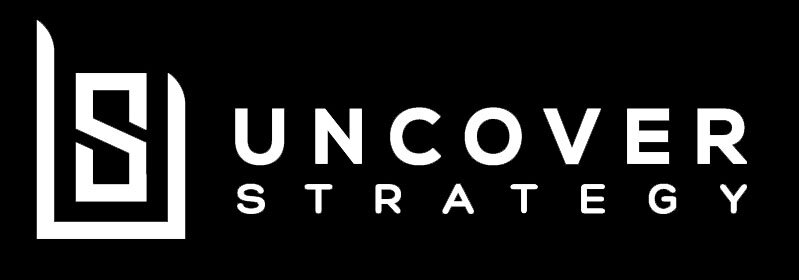How To Ensure Your Strategy Is Effective
Cross-check.
You have taken great care: You have studied a lot about business strategy. You worked out all the details for your business position and action, ready to take off. Or you already established yourself, and now you simply want to keep your current status or excel further from there. Overall, you don't want to stagnate and possibly put your business at risk, right?
But are there any hurdles to watch out for?
If you are conscious, you might consider that you are biased in your thinking. It is your very own business you are talking about or an exciting client at work. You know you are offering a great product, service, or both. But you are also aware that you just might look at it with a different view. As a first indicator, what do you have to look out for in your strategy to ensure its effectiveness?
In his book 'Business Strategy', Brian Tracy discusses precisely this. He has put together practical strategy principles, which may help you understand common mistakes and verify strategy work (Tracy 2015). And while he uses the analogy of war (which is right in this sense), I felt that a different analogy might also fit well to explain his great principles. He explained his principles in a war setting, in which the one side has to defeat his opponent. While it is true, I felt more compelled to explain the principles around the example of a shoe store (similar to the one described in this article of mine) would be a better fit. And more simply.
Business Strategy by Brian Tracy (2019) -from the Brian Tracy Success Library
Brian Tracy lays out principles and thinking of Business Strategy in a relatively simple way from his series, the' Brian Tracy Success Library'.
Okay, so let's dive into this. Imagine you are a shoe store in a metropolitan area. You have laid out your strategy and are trying to verify it. You come across Brians principles (Tracy 2015). You are seeking to ensure that you have done an effective job at the development of this.
1. The Principle of the Objective
When you opened up your store about ten years ago, it was only shoes that you are selling. However, you have a great area and location. Why not sell other products as well? And I am not talking about accessories that are directly related to shoes. Products that are similar (or even superior) to the products that have been on display at the lamp shop next to you come to your mind. So maybe you should start selling those beautiful lamps right next to your glamorous shoes – overall, they will make them look shinier, right?
Going by Tracy 2015 (2015), you rethink your approach. Tracy 2015 (2015) states clear, coherent objectives are essential for succeeding in one business area (you are a shoe-store, right?). Selling lamps or any other product not directly or indirectly related to your shoes could hurt you long term. It could split your efforts into supporting a good service for lamps (with a repair shop etc.) while at the same time having to supply good service to your shoe customers. Splitting your efforts is not only vanishing your objective of becoming the best shoe store in town (or even in a greater area you defined). You might spend too much effort on activities that do not give you the full benefit of concentration and positive synergy regarding your shoe business.
2. The Principle of the Offensive
Napoleon said, "No great battles are ever won on the defense." (Tracy 2015).
You will have to innovate and continuously distinguish yourself from the competition. If you do not, you might just enter an ugly price war because you are easily comparable. This is what seems to happen to many offline retail businesses – unfortunately.
Do things differently – and continuously check back with your strategy to prioritize your efforts in continuous innovation. Offer or develop additional services (such as RunDNA did as explained in this article of mine). You will fail sometimes. But you will also likely discover something new and provide services that you will have no other shoe retailer to compete with (often regarded a 'Blue Ocean').
3. The Principle of the Mass
Linking back to principle one, Tracy 2015 (2015) explains how you need to bundle all your forces onto one' critical point'. This is also emphasized by Porter 1996 (1996, p. 63) when he explains that the '… competitive value of individual activities cannot be separated.'.
What does this mean for your shoe store? Again, you will not invest in a lamp business that will be operating in the same store. You already figured that out in step 1.
Instead, you concentrate on shoes. You are using all your staff to achieve your goal of becoming excellent at selling shoes. Everything you do will have this in mind – from the offline sale in-store to the customer's understanding of the development of new services or quality of services.
4. The Principle of Maneuver
Flexibility can be seen here as an analogy for innovation and agility. 'To maintain … flexibility in business, you must always be willing to stand back and question the status quo.' (Tracy 2015).
Let's say after a few years, your competitors also offer excellent service and maybe have even copied your selling and value creation efforts. Now what?
Let's say a big marathon is coming up organized by your city. It has been set up rather quickly and will feature massive amounts of people (let's say COVID-19 would be cured at that time). You take the opportunity. You mobilize your workforce, a cohort of enthusiastic runners, to offer a 'run-along' service—every day until the marathon. Running together and talking about the shoe you are wearing, how it feels, how it performs. And then making a much more likely purchase with much more likely loyal, long-term customers.
You quickly maneuver your selling activities, combining multiple principles, and account for these activities in your overall strategy.
5. The Principle of Coverted Action
This is what Brian Tracy describes as 'cohesive unit action' (Tracy 2015). By this, he means that all activities should work together smoothly, ensuring a cooperative approach and ultimately, delivering constant value.
Coming back to our shoe store, this could mean that you are trying to include a carefully thought-out idea on how you can ensure a consistent experience for the customer. For example, you might aim for leading a 'team' instead of a 'group' (because there is a significant difference). You might want to nurture team spirit. With that, more often than others, you want your staff to say 'we' instead of 'I' (Tracy 2015). Ultimately, you will find that the customer will notice these details by having a superior shopping experience.
6. The Principle of Surprise
Again, this principle refers to innovation to some extent. You will want to embrace improvements in any category to develop competitive advantages such as products, services, processes, etc. (Tracy 2015). It will keep you different from other companies.
Linking again to the number two principle above and my example of one of my earlier blog posts, this is a critical point in your strategy. Keep pushing for more so that you do not only focus on the factor price – which is the easiest to compare in a world with sites such as newegg.com or idealo.de.
Don't enter this war. It is exhausting. And often comes with little profits.
7. The Principle of Exploitation
Let's say you have been coming up with a superior new product. The product does not have any other competition right now. You have created an absolutely unique value proposition. Now go out there and exploit it to take that market share – quickly (Tracy 2015).
It is possibly a little far fetched (but I think adequate to make this point clear). Let's assume you came up with inventing fully functional Anti-Gravity Boots (from the movie 'Jupiter Ascending'). In essence, if you watched the movie, they would let you fly (I only heard about it but didn't watch the film itself, so don't nail me down on this one).
If you offer these shoes, I will be your first customer. Guaranteed.
Source: Jupiter Ascending - Warner Bros. Pictures (2019)
You know your competition might be able to copy your actual product rather quickly (Tracy 2015). And this has always been the case (heck, sometimes they come out with a copy quicker than the original as it was the case with a Kickstarter campaign on the 'fidget cube'). So be fast. Gain that market share and, ultimately, your position.
You know your competition might be able to copy your actual product rather quickly (Tracy 2015). And this has always been the case (heck, sometimes they come out with a copy quicker than the original as it was the case with a Kickstarter campaign on the 'fidget cube'). So be fast. Gain that market share and, ultimately, your position.
For the shoe shop, this would mean that they might allocate funds for a quick start of their R&D efforts if such product advancements or service improvements are of excellent expanding dimensions. Push that flying shoe to other retailers in other countries (if you do not own a presence there) or ramp up production and worldwide availability through your online portal.
Conclusion
There is a reason why a fifth of companies in a market sector achieves to obtain 80% or more of the profits. From a company's view, it often does not make sense to enter the fierce competition – only because it costs your earnings. Checking your strategy against these factors can help create 'Blue Oceans' and ultimately delay any 'Copy Cats' and keep you in the spot of an advantage.
The ‘fidget cube’ stood no chance against an offer on the Chinese-only web store Taobao.com (淘寶網). A seller was able to copy and offer the product quicker than the organizer of the successful Kickstarter campaign.
Sources: 50 Shades of Fake - Forbes.com (2017)
(Photo: Benjamin Joffe)
What do you think about Brian Tracy's principles? Do they cover the critical points in looking at your small or corporate business strategy? Is he missing something, or did he do an excellent job of combining possible errors and help one craft a better strategy?
As always, I would love to hear your thoughts. Here on my blog, Twitter, Instagram, or simply via a Zoom meeting.
References
Porter, M 1996, 'What is Strategy?', viewed 10 September 2020, <https://iqfystage.blob.core.windows.net/files/CUE8taE5QUKZf8ujfYlS_Reading+1.4.pdf>.
Tracy, B 2015, Business Strategy (The Brian Tracy Success Library) (eng), AMACOM, New York.





